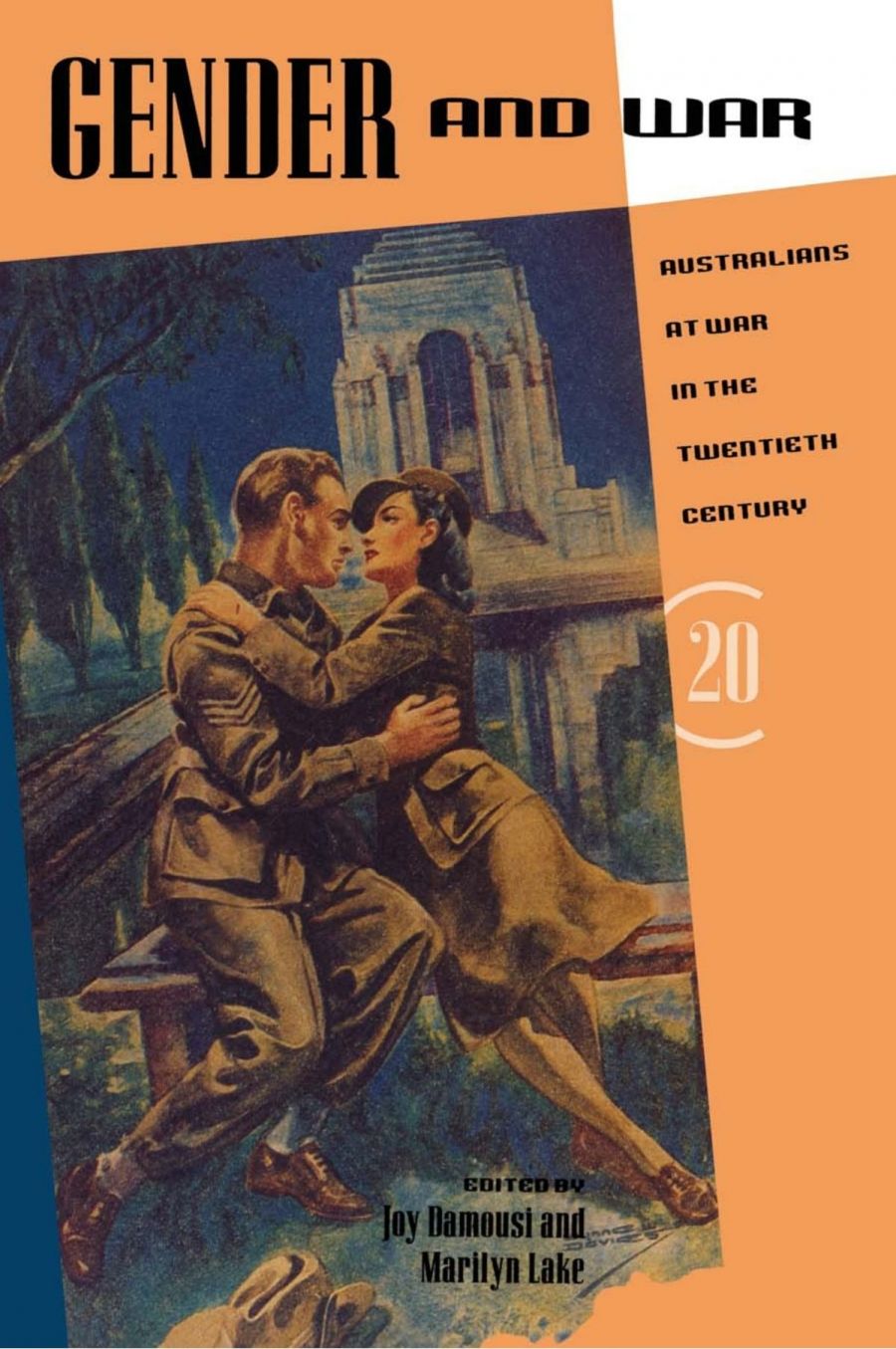
- Free Article: No
- Contents Category: Military History
- Review Article: Yes
- Online Only: No
- Custom Highlight Text:
The serious academic study of war has grown considerably in Australia in the last ten to fifteen years, bringing with it an often welcome diversification in focus and a willingness to subject old issues to fresh scrutiny. One sign of the increasing acceptance of war as a subject of serious study in the universities is the increasing number of university historians and other who, with little knowledge of or interest in the mechanics of war, nonetheless extend their work to include consideration of war and the military as these affect their particular areas of interest.
- Book 1 Title: Gender and War
- Book 1 Subtitle: Australians at war in the twentieth century
- Book 1 Biblio: Cambridge University Press $90 hb, $29.95 pb
This volume offers a variety of analyses of the relationships between warfare, the military, history, and gender in Australia in the twentieth century, with the emphasis on the ‘gendered dimensions’ of these relationships. The result is a very mixed one. The editors argue that traditional explanations of the impact of war have tended to create a series of contrasting roles and locations for men and women – battle fronts versus home fronts, private versus public and so on – and that wars have had an unsettling and often contradictory effect on traditional patterns of relations between the two. These are both eminently sensible propositions, and in their introduction Dr Damousi and Professor Lake go on to suggest some of the ways in which these have played themselves out in the Australian context.
Unfortunately, much of what follows does not live up to the promise of the early pages. Several things struck this reader as problematic. The book is almost endlessly self-referential, and in many of the chapters little attempt is made to engage with mainstream interpretations in order to show how and why these are inadequate or in need of revision. Indeed, the chapters that work best are precisely those which seek to place female experience, issues of sexuality, or strain in gender relations into the wider context of war and the experience of other social or military groupings. The contributions by Evans, Smart, and Curthoys all add something to our understanding of women’s involvement in oppositional politics and social movements during World War I; Wotherspoon points to the ways in which contact with large numbers of American troops during World War II provided openings to a more cosmopolitan world for some homosexual men; Ford examines the ways in which fears of female homosexuality were handled in the women’s services.
Too much of the rest is a catalogue of currently faddish post-modernist concerns. A number of contributors observe that the creation of women’s services or the movement of women into non-traditional areas of employment were significant in the redefinition, however temporary, of gender relations, but virtually all then continue as though nothing more needs to be said. In fact, very little serious work has been done in these areas, and much of that remains either unpublished (I can think of four or five theses undertaken in my own department in the last ten years) or scattered in small journals. Analysis of the ways in which women’s wartime efforts threatened established power structures or initiated organisational change might encompass the resistance of the service hierarchies, especially in the RAN, to the formation of the women’s services (and, incidentally, to their reformation in 1951). The broadening of women’s employment in the Air Force in particular during the Pacific War, and the resistance on the part of the service commands to the employment of women outside Australia, would also seem worthy of investigation, particularly in light of the editors’ observation concerning the sometimes contradictory effect of war on the organisation of women’s work. The problem here, however, is that the majority of these authors, however well qualified to write on gender issues, know little or nothing about war and are, in general I think, suspicious of, where not hostile to, military organisations, about which they know little in any case. (Indeed, one contributor notes in her biographical details that she ‘despises’ war, but ‘nevertheless’, teaches post-structuralist feminist theory; the point, if there is one, to this juxtaposition escapes me.)
And why is it that so much of what is written in the field of gender studies seems to cultivate a ‘mode of discourse’ at once obscure and pretentious? What is one to do with a sentence such as this, extreme but by no means unrepresentative:
I will pay particular attention to the figuring operations by which the category of the dysfunctional achieved both its cultural intelligibility and its status as a scientific materiality; in other words, I will be mapping rhetorical strategies that determine the enunciative status of the category of the dysfunctional serviceman.
Taken as a whole, this book fails to satisfy at several levels. Readers contemplating the hefty asking price should note that a number of the chapters in it have appeared elsewhere, and that several are little more than precis of their author’s other, longer works (some of which, like the books by Darian-Smith and Thomson, are well worth reading, but are in no way extended by their contributions here). New approaches to the study of war and the military in Australian history are to be welcomed, but to be useful they need to be grounded adequately in their subject matter, and to say something worth saying.


Comments powered by CComment